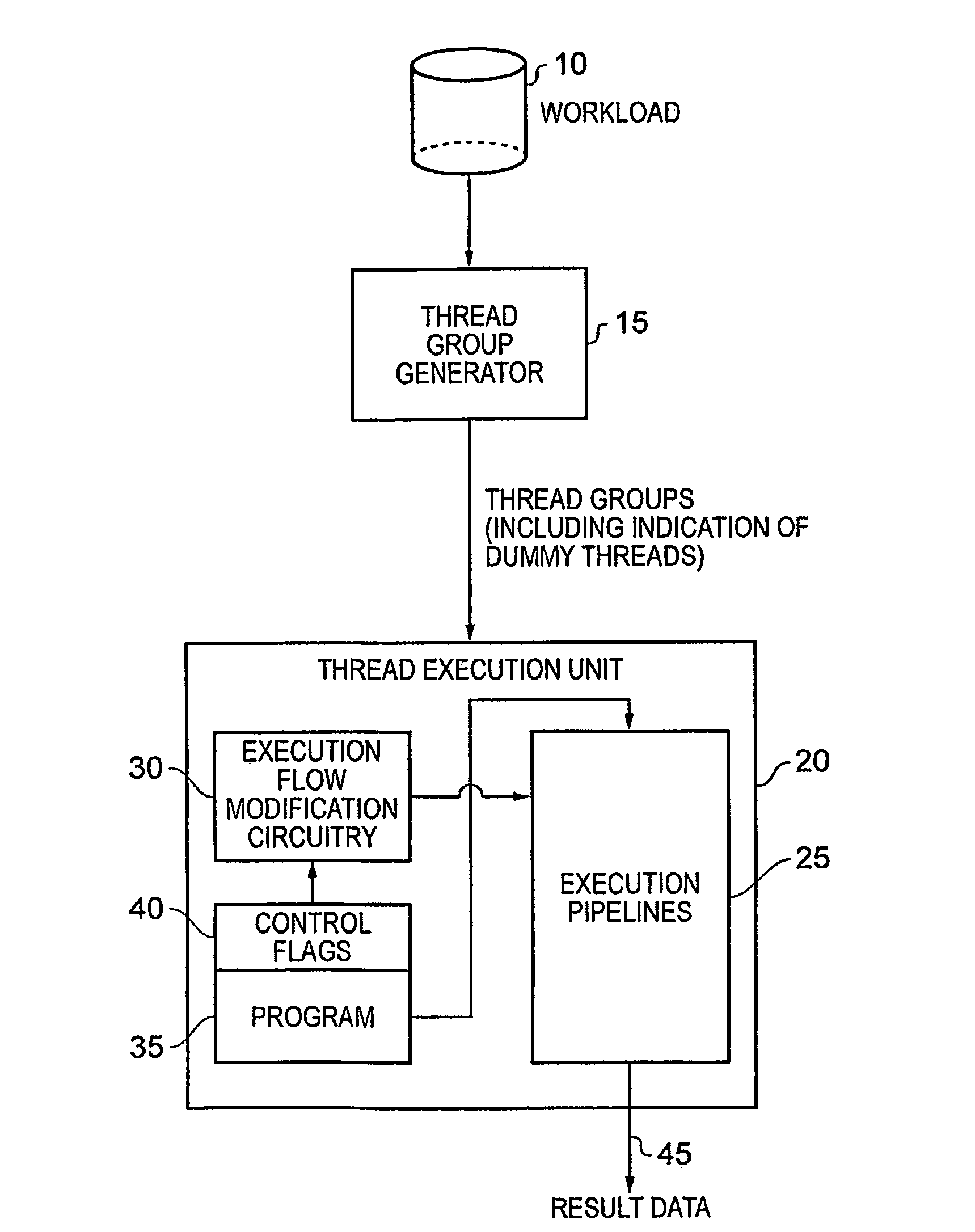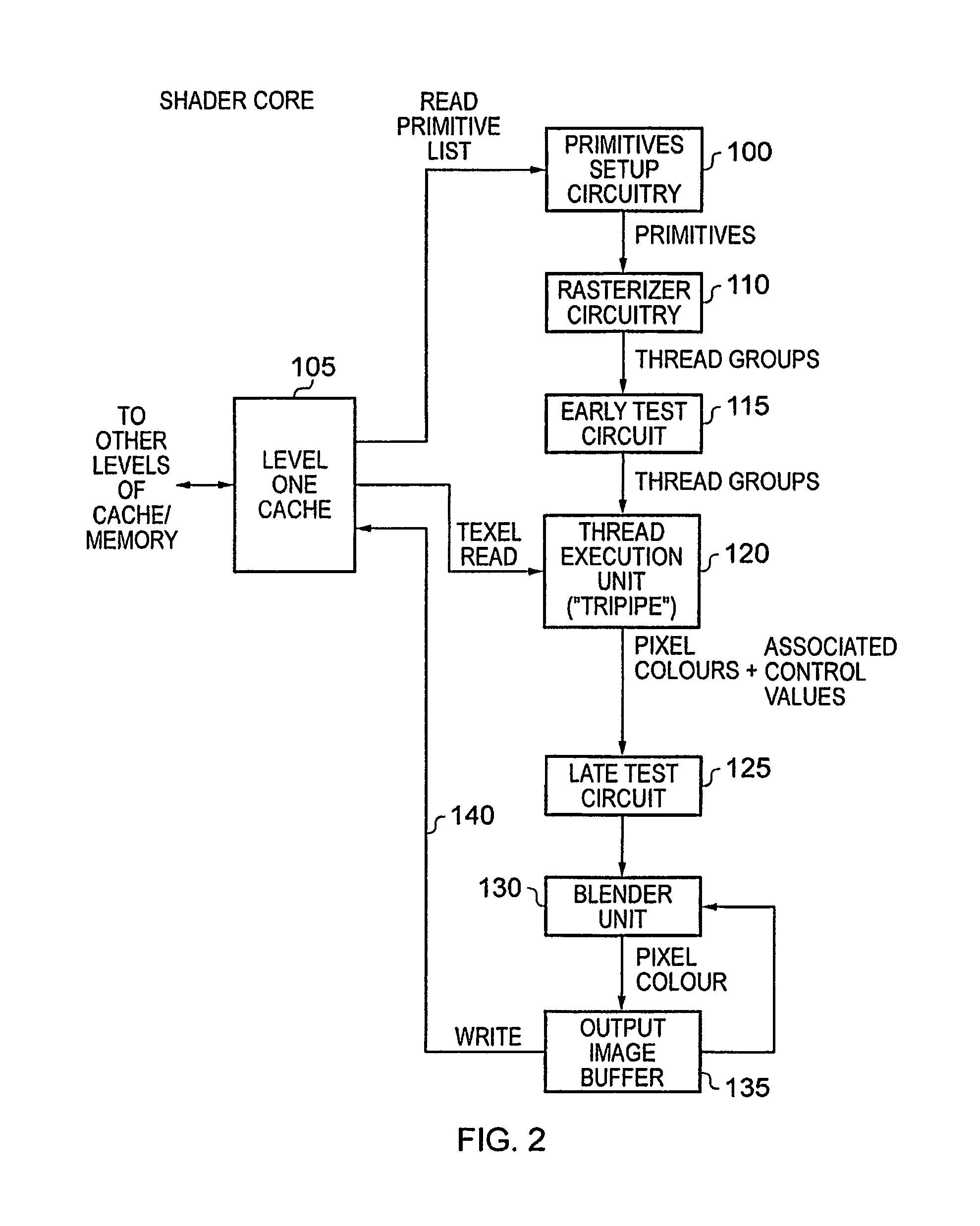Data processing apparatus and method for processing a received workload in order to generate result data
a data processing apparatus and workload technology, applied in the direction of program control, multi-programming arrangements, instruments, etc., can solve the problems of significant amount of data processing apparatus resources consumed in the handling of such dummy threads, and the power consumption efficiency is not efficient, so as to reduce the computation required, improve the performance and free up the resources of the data processing apparatus
- Summary
- Abstract
- Description
- Claims
- Application Information
AI Technical Summary
Benefits of technology
Problems solved by technology
Method used
Image
Examples
example three
[0073 is similar to example one, but includes a preliminary arithmetic operation, to calculate a texture position. This can allow an effect to be applied before looking up in the texture, for example by altering pixel positions prior to the lookup. By such an approach, an effect such as a ripple effect can be applied to an image. In this example, as with example one, the kill flag is set, but since the evaluation of the kill flag only occurs at the kill / skip evaluation circuitry 230 of the texture pipeline 220 when the texture lookup instruction is executed, it will be clear that the calculate texture position instruction will be completely executed.
[0074]Example four shows an example where it is not appropriate to set either the kill flag or the skip flag. This is due to the store instruction occurring towards the end of the sequence, which requires the result to be stored out to memory via the load / store pipeline 215. It is hence assumed that that data is required later, and it wo...
PUM
 Login to View More
Login to View More Abstract
Description
Claims
Application Information
 Login to View More
Login to View More - R&D
- Intellectual Property
- Life Sciences
- Materials
- Tech Scout
- Unparalleled Data Quality
- Higher Quality Content
- 60% Fewer Hallucinations
Browse by: Latest US Patents, China's latest patents, Technical Efficacy Thesaurus, Application Domain, Technology Topic, Popular Technical Reports.
© 2025 PatSnap. All rights reserved.Legal|Privacy policy|Modern Slavery Act Transparency Statement|Sitemap|About US| Contact US: help@patsnap.com



